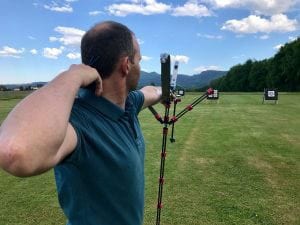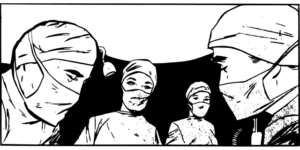In early March 2021, the National Comprehensive Cancer Network (NCCN) shared a new set of NCCN Guidelines for Histiocytosis. Histiocytosis, or hystiocytic disorders, are a group of rare conditions characterized by the overproduction of histiocytes, a type of white blood cells, which include dendritic cells, monocytes, and macrophages. Three of the most commonly identified histiocytoses in adults include Rosai-Dorfman disease, Langerhans cell histiocytosis (LCH), and Erdheim-Chester disease (ECD). However, because these conditions are rare, many doctors are not clear on diagnostic or treatment practices. Thus, the updated NCCN Guidelines have the opportunity to inform care moving forward.
Histiocytic Neoplasms
Langerhans Cell Histiocytosis (LCH)
Although the exact cause of Langerhans cell histiocytosis (LCH) is unknown, many doctors believe that it could be caused by either cellular mutations in the MAPKinase pathway or an abnormal immune response. For those with lung LCH, smoking may increase the risk. LCH is a rare inflammatory disorder caused by excess histiocytes or Langerhans cells. As these accumulate throughout the body, they prompt the formation of granulomas, small tumors or areas of inflammation. Later, these tumors may spread, impacting the bones, skin, eyes, intestines, or other areas of the body. Typically, LCH occurs in children, affecting an estimated 1 in every 200,000 children. For treatment, LCH often requires surgery or chemotherapy.
Symptoms vary but may include:
- Hearing loss
- Jaundice (yellowing of the skin and eyes)
- Swollen lymph nodes
- Scaly or waxy rashes
- Chest pain
- Shortness of breath
- Abdominal discomfort
- Bone pain
- Nausea and vomiting
- Diarrhea and/or bloody stool
- Fatigue
- Fever
- Rapid weight changes
- Bulging eyeballs
- Mouth ulcers
Erdheim-Chester Disease (ECD)
Until 2016, Erdheim-Chester disease (ECD) was not recognized as a rare cancer by the World Health Organization (WHO). This rare, multi system blood cancer is characterized by excess production and accumulation of histiocytes. As histiocytes accumulate in various tissues and organs, it can cause bone density increases, organ failure, and other issues. Overall, the underlying cause of ECD is unknown. However, some researchers hypothesize that ECD could result from abnormal fibrosis and inflammation. Typically, ECD occurs in those aged 50 or older. It also occurs slightly more often in males than females. Symptoms include:
- Unintended weight loss
- Fever
- Fatigue
- Bone thickening, hardening, and pain
- In many cases, the bone pain will first appear in either the upper arms or lower legs.
- Malaise
- Fatty nodules on the skin or eyelids
- Pulmonary fibrosis
- A dry cough
- Difficulty breathing
- Impaired muscle coordination
- Slurred speech
Rosai-Dorfman Disease
The National Organization for Rare Disorders (NORD) describes Rosai-Dorfman disease as:
a rare disorder characterized by overproduction (proliferation) and accumulation of a specific type of white blood cell (histiocyte) in the lymph nodes of the body (lymphadenopathy), most often those of the neck (cervical lymphadenopathy).
Typically, Rosai-Dorfman disease affects children, teens, and young adults. While the cause is unknown, many speculate that autoimmune or immunodeficiency issues may prompt Rosai-Dorfman disease. It affects males more than females. However, affected females will often experience symptoms in their 20s or 30s, compared to males who are usually affected under 20 years old. Symptoms include:
- Unintended weight loss
- Fever
- Pallor (pale skin)
- Painless lymph node inflammation
- Malaise
- A chronic runny nose
- Yellow or purple skin lesions
- Enlarged spleen and liver
NCCN Guidelines
With histiocytic neoplasms, there are a few difficulties in diagnosis and treatment. For example, since these cancers are so rare, it can be difficult to identify and diagnose them early on. Additionally, doctors are unclear how to work with insurance for treatment approval, how to identify what stage the cancer is in, or even how to monitor the cancers and their progression. These disorders may also present in different ways or with varying clinical presentations, making it difficult to nail down. These NCCN guidelines, spearheaded by experts, are designed to combat these challenges.
In the NCCN Guidelines, it explains how to perform evaluations and tissue analysis for Rosai-Dorfman disease; what the pathology is for these histiocytic neoplasms; and different treatment regimens. For example, in patients with BRAF V600E mutated EDC, vemurafeniba would be the preferred line of treatment. But cobimetiniba would be used for those with a MAP kinase pathway mutation or another mutation that cannot be detected via testing.
The NCCN offers over 80 different guidelines and recommendations for patients with bother rare and common cancers. Outside of the guidelines available for physicians, there are also guidelines available for patients.
Read the source article here.








